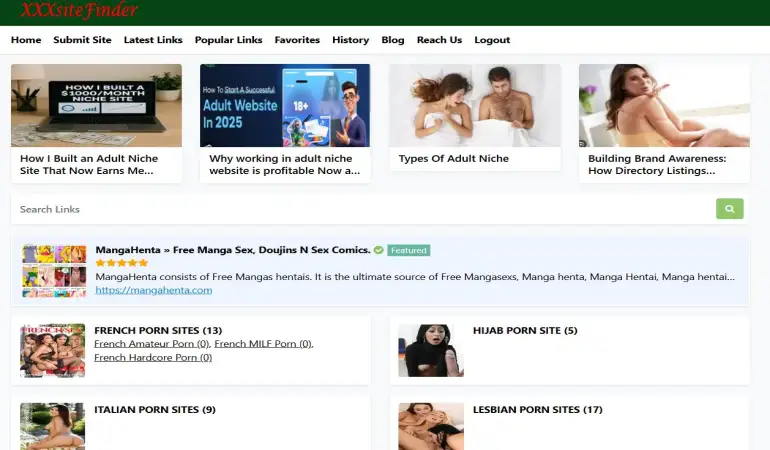How adult website SEO is differ from General Niche website SEO?
The adult industry faces unique challenges, including strict regulations, restrictions on advertising platforms, and specific content moderation, while general niche sites often have more freedom in these areas.
October 26, 2024 05:01
Here's a comparison chart detailing 20 ways adult website SEO differs from general niche website SEO. The adult industry faces unique challenges, including strict regulations, restrictions on advertising platforms, and specific content moderation, while general niche sites often have more freedom in these areas.
| Factor | Adult Website SEO | General Niche Website SEO |
|---|---|---|
| 1. Content Restrictions | Strictly regulated; explicit content can face more censorship, and content must comply with legal regulations to avoid penalties. | Fewer content restrictions; generally more flexibility to publish content that’s SEO-optimized. |
| 2. Keyword Research | Sensitive keywords need careful targeting to avoid legal issues or search engine penalties; higher competition for high-volume keywords. | Easier to conduct without sensitive restrictions, allowing for broader keyword variations and competitive analysis. |
| 3. Audience Demographics | Generally, adult content appeals to specific demographics and is often age-restricted. | Audience varies widely; content is less restrictive, appealing to all age ranges (within site guidelines). |
| 4. Ad Platform Limitations | Cannot run ads on major platforms (Google Ads, Facebook); relies on adult-specific ad networks. | Can use most advertising platforms, including Google, Facebook, LinkedIn, and Twitter. |
| 5. Backlink Strategy | Limited; many high-authority sites won’t link to adult sites. Backlink building is challenging and often relies on niche networks. | Backlinks from a wide range of websites, including authority domains, news sites, and blogs, are more easily acquired. |
| 6. SERP Competition | High competition, but adult keywords have strict filters, creating more barriers for newcomers. | Competition varies based on niche but generally has fewer restrictions and lower barriers to rank on SERPs. |
| 7. User Privacy | Must prioritize anonymity and secure browsing for users due to stigma and privacy concerns. | Privacy is a priority but not as critical; users don’t usually expect enhanced privacy measures. |
| 8. Organic Traffic | SEO is the primary method for traffic generation due to limited ad options, with high reliance on organic search results. | Can use a mix of organic and paid traffic sources without facing adult-specific restrictions. |
| 9. Social Media Presence | Limited social media options as many platforms restrict or ban adult content; requires unique marketing approaches. | Open access to social media platforms, allowing for a broad social media strategy to increase brand awareness and traffic. |
| 10. Content Updates | Needs frequent updates due to high competition and the short shelf life of adult content. | Content updates vary; evergreen content is often suitable, reducing the need for frequent updates. |
| 11. Search Intent | Largely explicit intent-driven; user behavior is specific, affecting keyword optimization and content strategy. | Can target both informational and transactional intents, providing more versatility in content creation. |
| 12. Domain Authority | Often low due to restricted link-building; higher barriers to build authority with general websites. | Easier to increase domain authority by leveraging broader backlink sources and quality content. |
| 13. Bounce Rate | Tends to be high; content engagement is often brief and specific, requiring strategic internal linking and layout. | Lower bounce rates with longer user engagement on information-based content, blogs, and guides. |
| 14. Schema Markup | Schema is beneficial but may be limited in visibility; Google may restrict adult content schema exposure. | Schema markups are generally more visible, helping in rich snippets and enhancing CTR. |
| 15. SafeSearch Filtering | Content often flagged by SafeSearch filters, reducing visibility on search engines for users with SafeSearch enabled. | Rarely filtered unless content is flagged; content can rank without major visibility concerns. |
| 16. Local SEO | Challenging to implement due to sensitivity; adult businesses might not be supported in local directories or maps. | Commonly used for local reach and visibility; local SEO is highly effective and unrestricted. |
| 17. Content Moderation | Requires strict compliance with content policies, often involving age gates, user restrictions, and content warnings. | Content moderation is essential but less intensive; usually requires compliance with general guidelines. |
| 18. SERP Features | Limited access to features like Knowledge Panels and Featured Snippets. | Open access to most SERP features, enhancing organic reach and visibility. |
| 19. Analytics and Metrics | Privacy restrictions can limit data collection; explicit keywords may not fully reflect user intent due to privacy concerns. | Detailed analytics available with fewer privacy restrictions; easier to track user behavior patterns and intent. |
| 20. Legal Compliance | Strict legal requirements for content, including age verification and regional compliance, are mandatory. | Fewer legal restrictions; general compliance with content standards and age restrictions (where applicable) is sufficient. |




